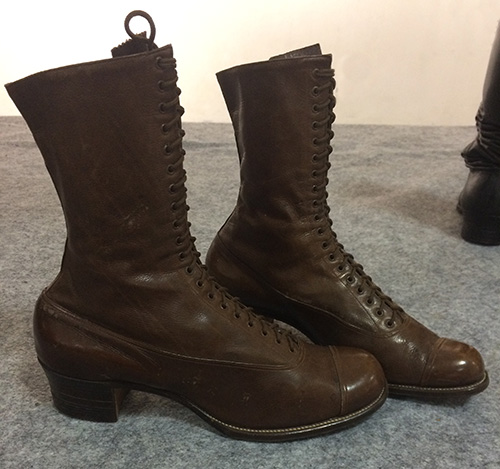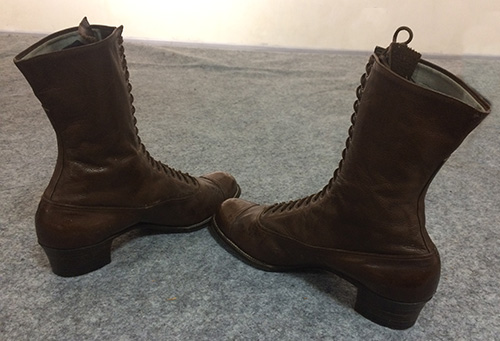 Recently, we’ve got a rare opportunity to dive into a museum storage and make photos of exhibits that are seldom seen by ordinary visitors. Usually, you’re able to observe such vintage pieces only through glass, and even then, only some of them are exhibited. So, this is your chance to see authentic Ukrainian shoes from the 19th-20th century in detail. This footwear is from different regions of the country, made from various materials, decorated with various embellishments, and produced by skillful artisans. The shoes in this collection are male, female, and – more often than you would think – unisex.
Recently, we’ve got a rare opportunity to dive into a museum storage and make photos of exhibits that are seldom seen by ordinary visitors. Usually, you’re able to observe such vintage pieces only through glass, and even then, only some of them are exhibited. So, this is your chance to see authentic Ukrainian shoes from the 19th-20th century in detail. This footwear is from different regions of the country, made from various materials, decorated with various embellishments, and produced by skillful artisans. The shoes in this collection are male, female, and – more often than you would think – unisex.
Our thanks to Ukrainian national center of folk culture “Ivan Honchar Museum” in Kyiv. All the footwear here is from their museum collection.
Men’s brown leather boots. Krapylivka village, Kozelets district, Chernihiv region (northern Ukraine), mid-20th century. Handmade. The soles of these boots are attached to the top part (the upper) with tiny wooden pegs and the low heel is attached by tiny metal nails.
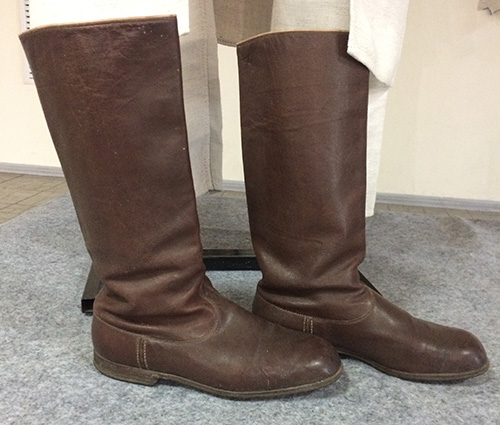
Male black leather boots. Vinyntsi village, Pereiaslav district, Kyiv region (central Ukraine), first half of the 20th century. Handmade. The boots are produced from calfskin; the soles are attached to the upper with tiny wooden pegs and the low heel is attached by tiny metal nails.

Men’s high black leather boots. The beginning of the 20th century. Industrial mass production. There is a marking “Continental” on the sole.
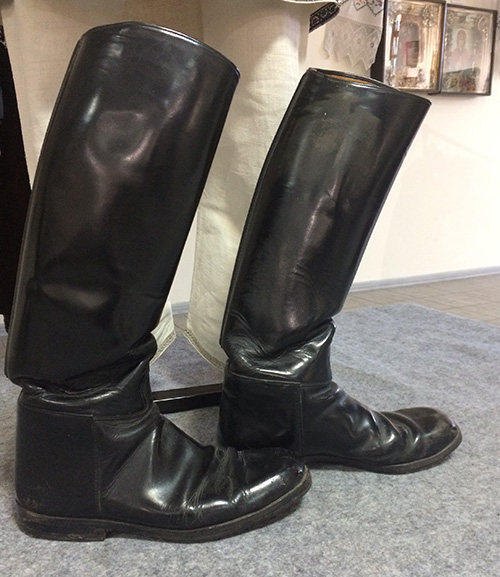
Unisex wooden shoes called “kaidany” or “stupaky”. Central Ukraine, mid-20th century. They are handmade from one whole piece of wood and painted in black. Footwear of the same shape and design can be found in Scandinavian countries.
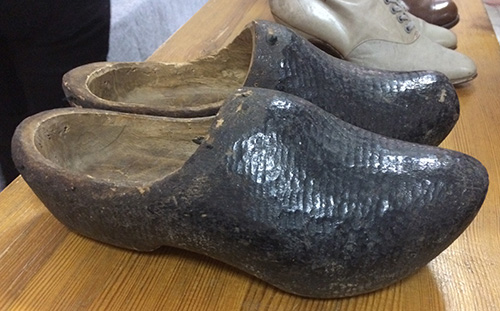
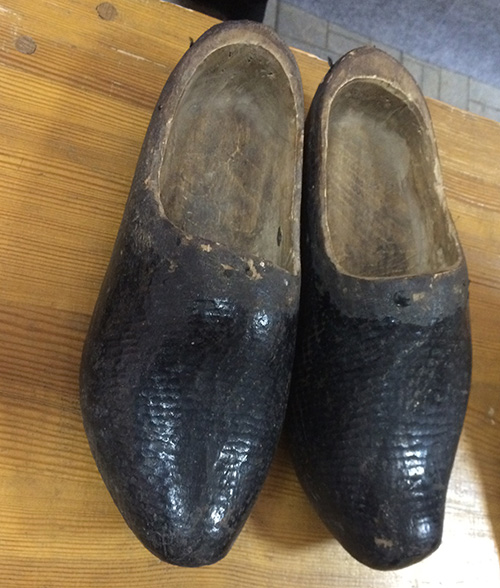
Unisex bast shoes called “lychaky” made combining bast fiber and hemp cord. Chernihiv region of Ukraine (northern part of the country), the beginning of the 20th century. These shoes also have hemp straps that are used to tie the shoe to the foot. Handmade. Similar footwear can be found in Russia, Belarus, Finland, and Baltic countries.
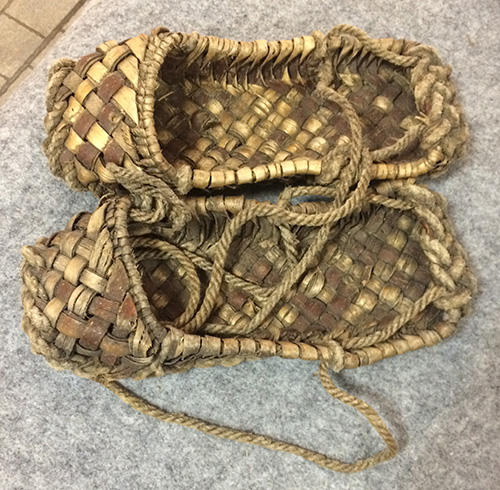
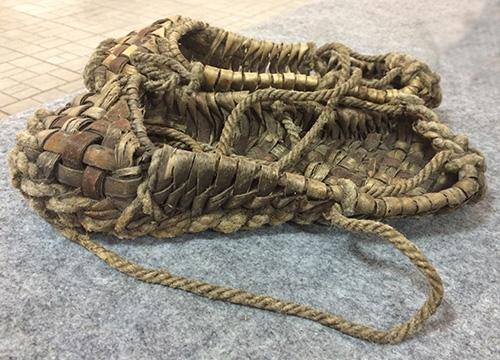
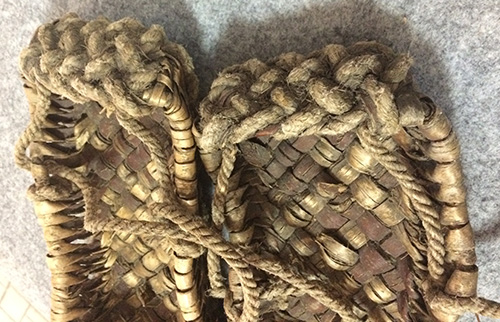
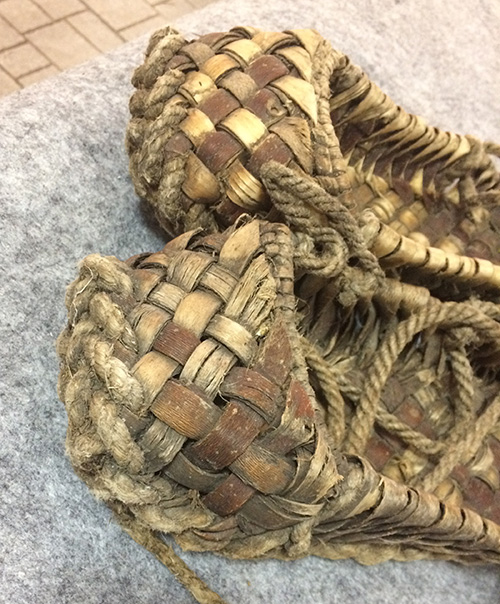
Women’s leather shoes called “postoly”. Velykyi Bereznyi district, Zakarpattia region (western Ukraine); so-called “Lemko” area where Lemkos ethnic group lives; the 1st half of the 20th century. Each shoe is made by hand from one whole piece of leather and adorned with metal eyelets and buckles as decoration. There are 3 leather straps on each shoe that help to keep it in place. Similar footwear was used in many countries of the Southeast Europe.
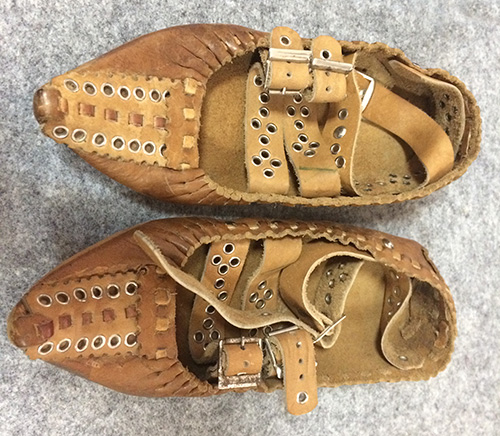
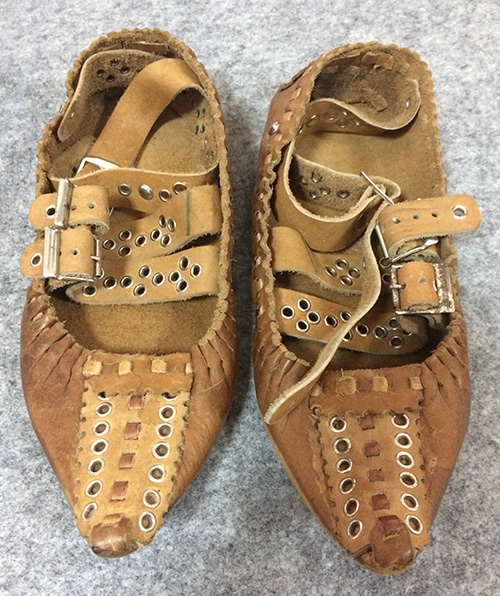
Female leather shoes called “postoly”. Bekhy village, Korosten district, Zhytomyr region (Northern Ukraine), the 2nd half of the 20th century. Handmade. Each shoe is made from one whole piece of leather and embellished with stamping on leather. Also, there is a leather strap with a brass buckle that ties the shoe to the foot. The back of each shoe is knit together with a cord. Similar footwear was used in many countries of the Southeast Europe.
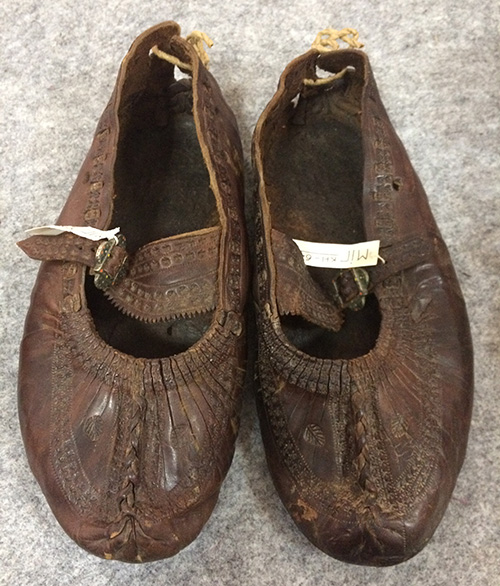
Unisex bast shoes called “lychaky” made from birch bark. Zhytomyr region of Ukraine (northern part of the country); so-called “Polissia” (woodland) area; the end of the 20th century. Handmade. These shoes also have very long (longer than the human height) hemp cords that tie them to the foot. Such lychaky were very cheap and easy to make but they frayed quickly. Similar footwear can be found in Russia, Belarus, Finland, and Baltic countries.
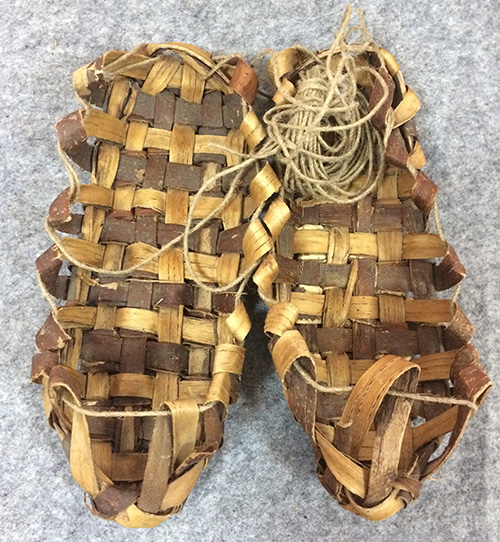


Women’s leather shoes called “postoly”. Ivano-Frankivsk region of Ukraine (western part of the country), the 1st half of the 20th century. Each shoe is made by hand from one whole piece of leather and adorned with stamping on leather and 2 brass buckles. These shoes have pretty and rather modern-looking leather straps that encircle the ankle. Similar footwear was used in many countries of the Southeast Europe.
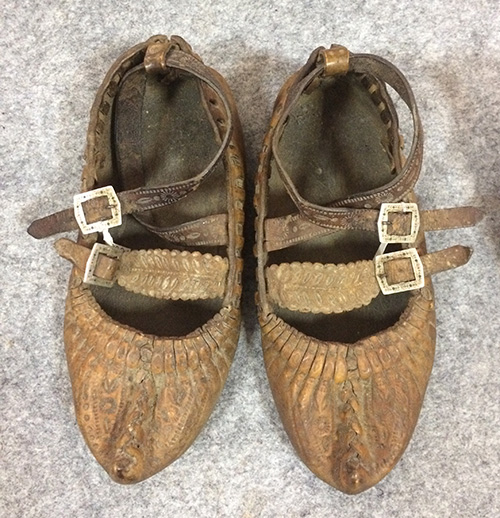
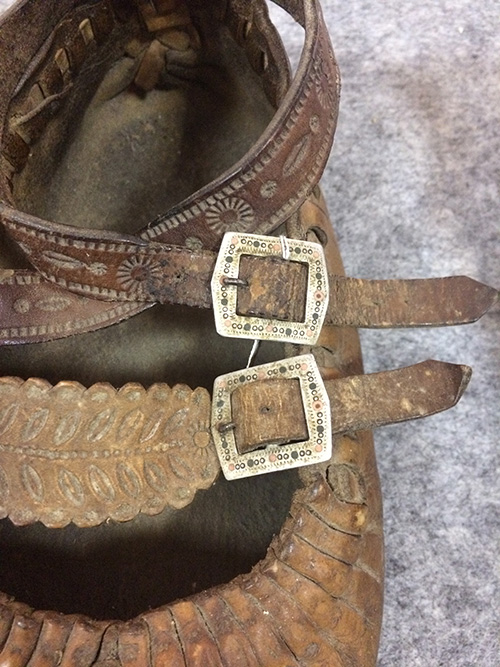
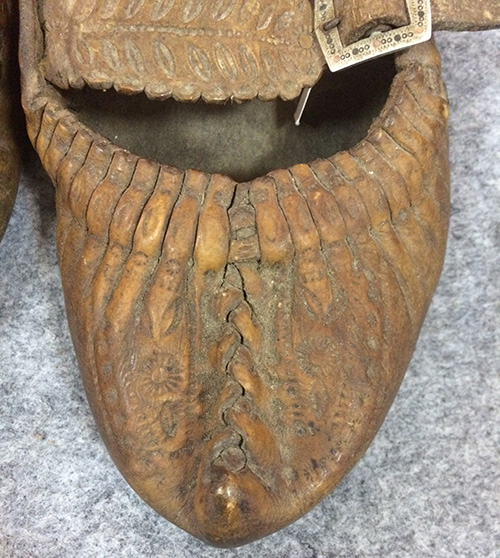
Unusual unisex shoes called “lychaky” made from coarse linen cord. Moskali village, Chernihiv region (northern Ukraine), the beginning of the 21st century. Handmade. These shoes have long cords which are used to tie the shoe to the foot.
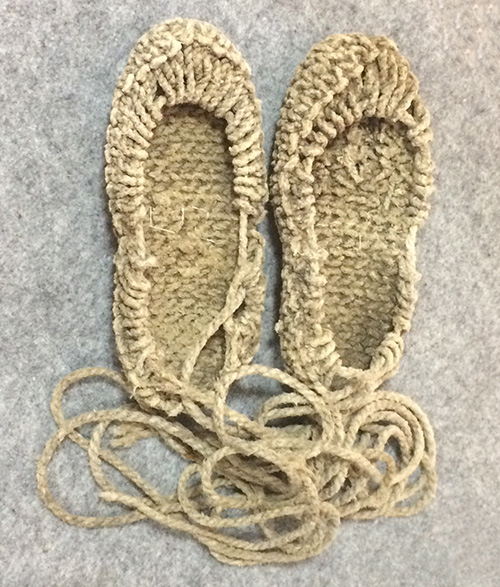
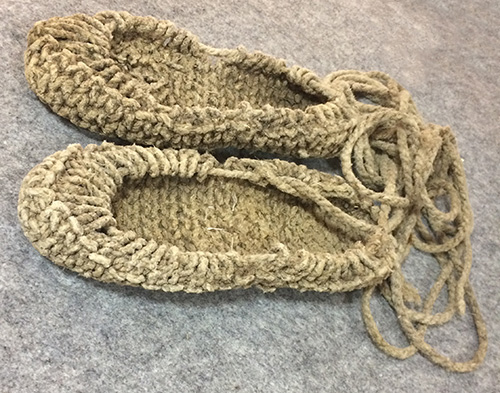
Here is also how such lychaky were worn. They were put on top of the linen leg wrappings, not bare skin. Both males and females used them, but men wore low leg wrappings and tied the cords lower, while women wore their leg wrappings high (sometimes, mid-thigh length) and tied the cord higher. Also, as you see, the back of lychaky is low and doesn’t rub the heel. But there was a much more serious problem – the cords weren’t flexible and they had to be tied very tightly to last the whole day, so it caused poor blood circulation in the legs and many related illnesses. A lot of people in the areas where such shoes were used on a daily basis died of these illnesses.
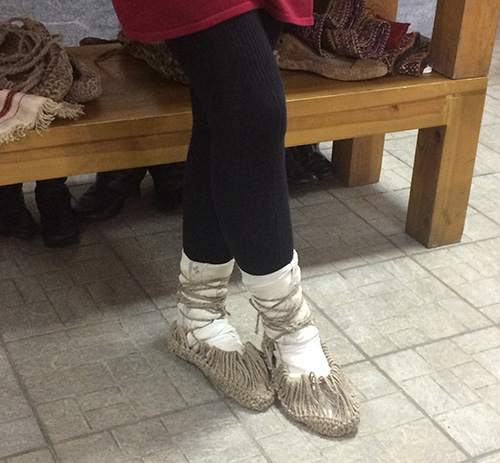
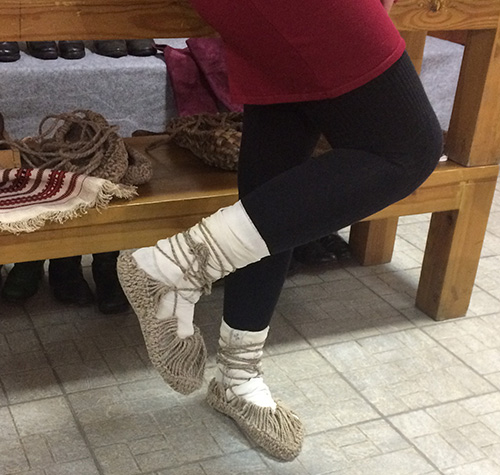
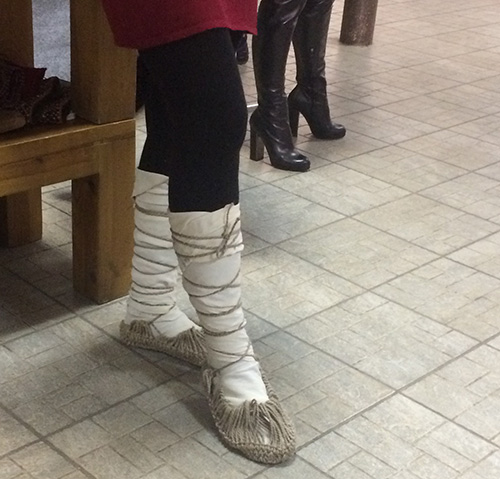
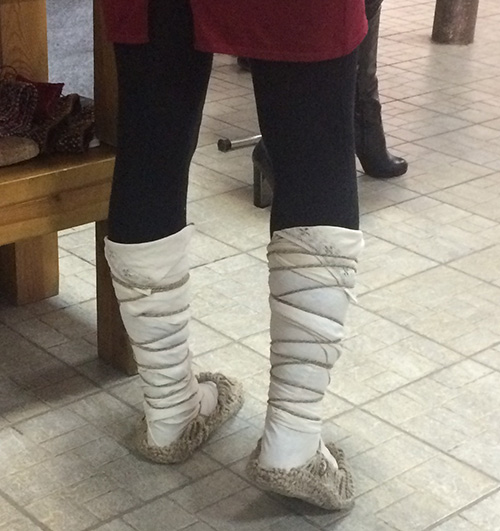
Female leather shoes called “postoly”. Ivano-Frankivsk region of Ukraine (western part of the country), the 2nd half of the 20th century. Each shoe is made by hand from one whole piece of leather and richly adorned with stamping on leather, sequins, beading, metal decorations, and 3 brass buckles. These shoes look really festive. Similar footwear was used in many countries of the Southeast Europe.



Unisex leather shoes called “postoly”. Kryvorivnia village, Verkhovyna district, Ivano-Frankivsk region (western Ukraine), the 1st half of the 20th century. Handmade. Each shoe is made from one whole piece of leather and adorned with stamping on leather and tiny metal nails on each wrinkle. You can also see that the back of postoly has holes and is usually knit together with a cord. Similar footwear was used in many countries of the Southeast Europe.

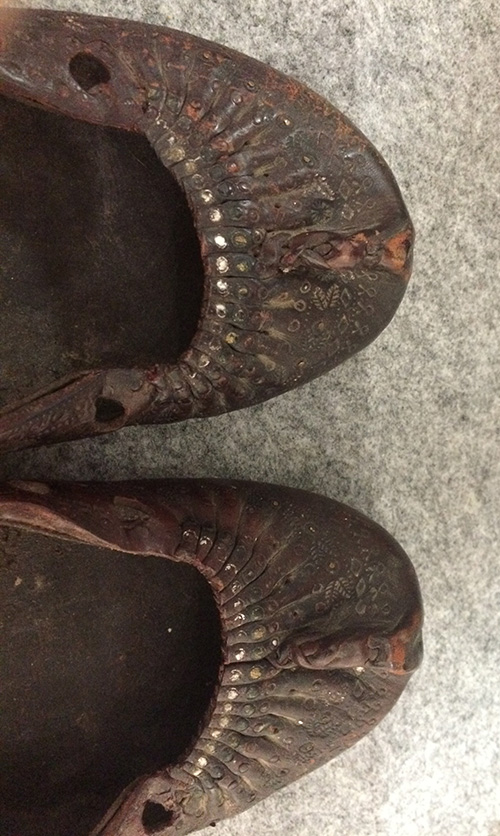
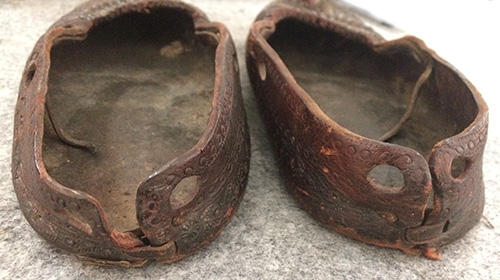
Women’s high leather boots dyed green. Kyiv, the 2nd half of the 20th century. Handmade. Most often, boots in the rural area of Ukraine were black or brown, so such green footwear looked very festive and was valued high. These shoes must’ve been used by a folk performer, and they are produced using old techniques. The sole is made from leather and the heels are wooden, covered with leather.
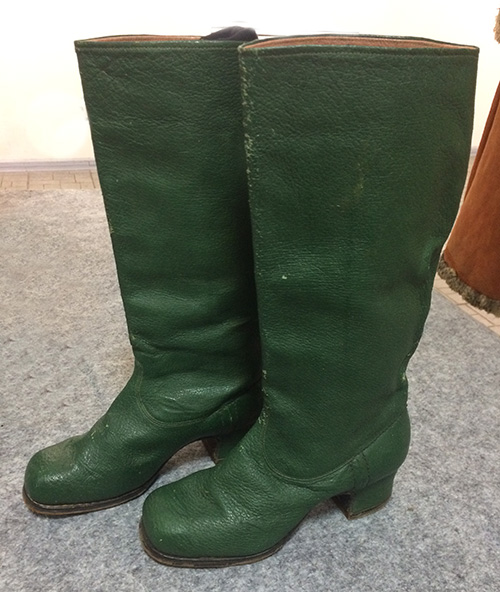
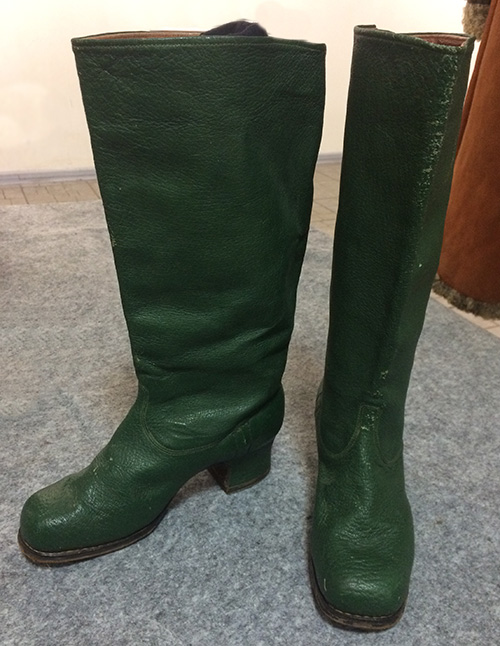
Female leather boots called “marigold boots” because they were duo colored. The end of the 19th century. Handmade. These boots were made from black and light-brown leather. The bootlegs are actually very high but folded up twice. There is a decorative sewn pattern on the bootlegs. The heels are made from pieces of leather glued together. Similar footwear was used in Poland.
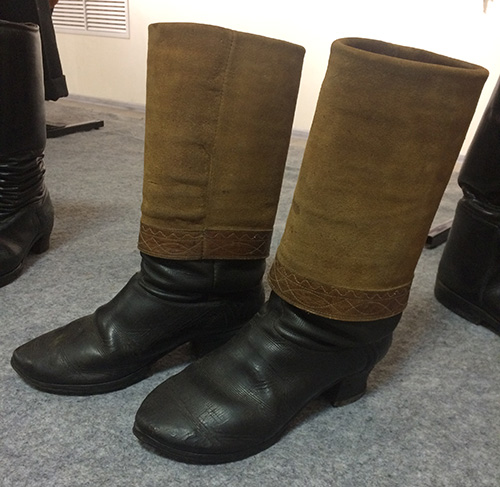
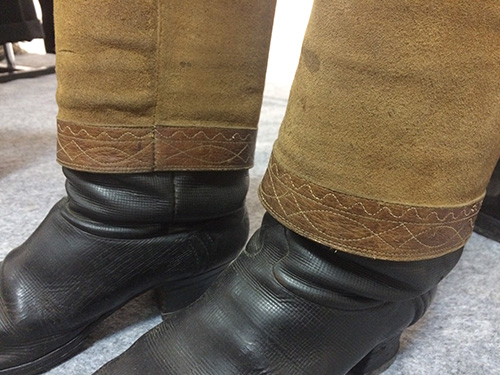
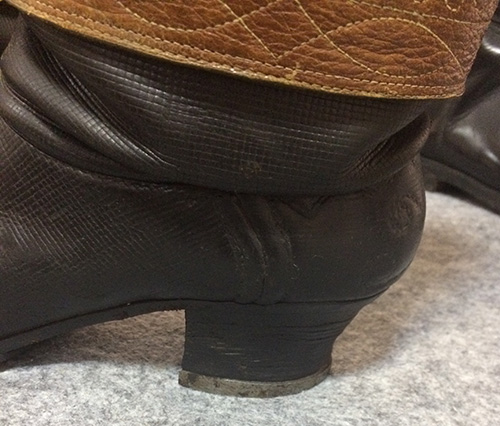
Women’s high leather boots called “riasovani boots” with an accordion folded, decorative shape of the bootlegs. Ivano-Frankivsk region (western Ukraine), the beginning of the 20th century. Handmade. Such an unusual shape of the bootleg has a decorative purpose and also it is comfortable to walk in them. But it is rather hard to take shoes off because of the accordion folding – and that’s why there is a special nib at the back. Also, the back of the boots is adorned with tiny brass nails.
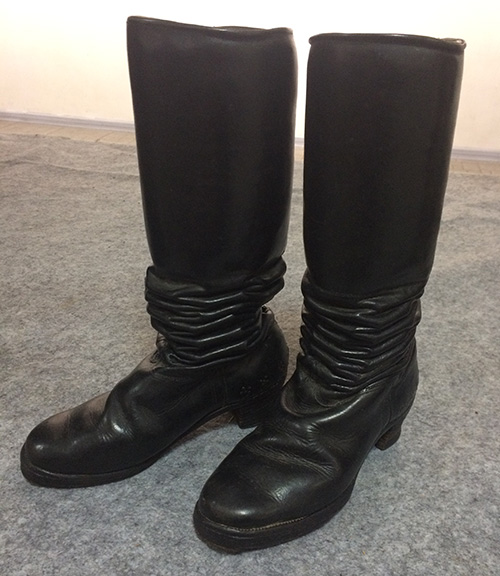
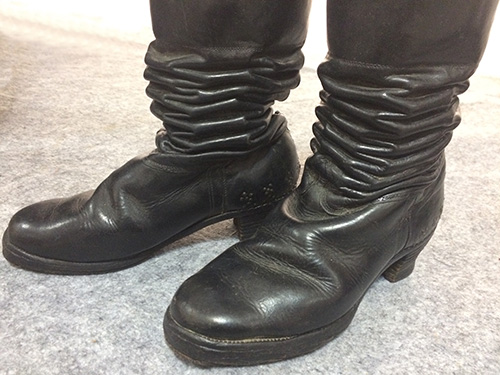
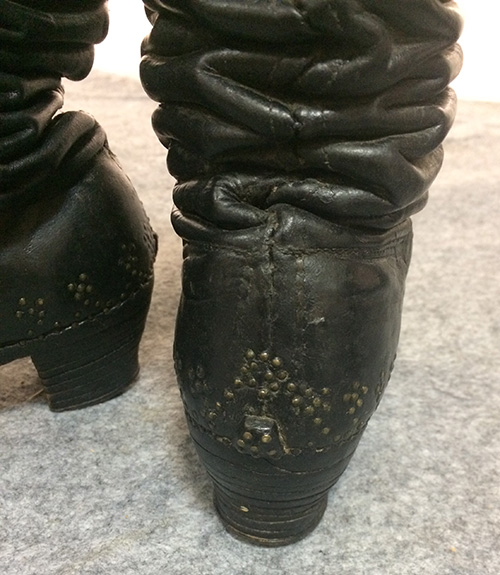
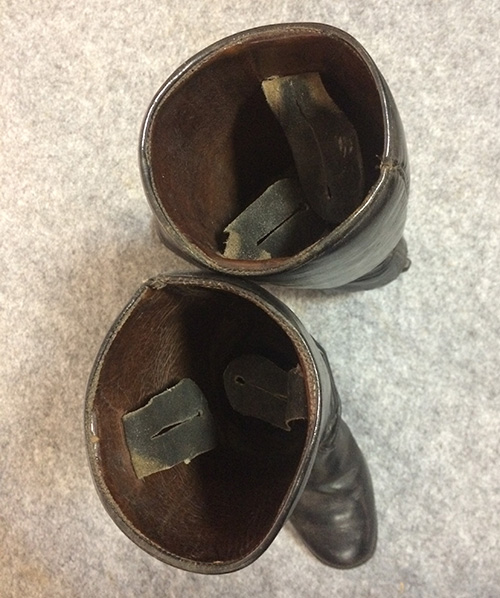
Another variant of female high leather boots called “riasovani boots” with an accordion folded, decorative shape of the bootlegs. Ivano-Frankivsk region (western Ukraine), the beginning of the 20th century. Handmade. Such an interesting shape of the bootleg has a decorative purpose and also it is comfortable to walk in them. These boots have more accordion folds than the previous sample.

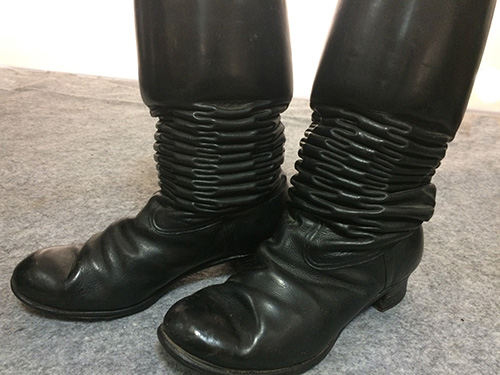
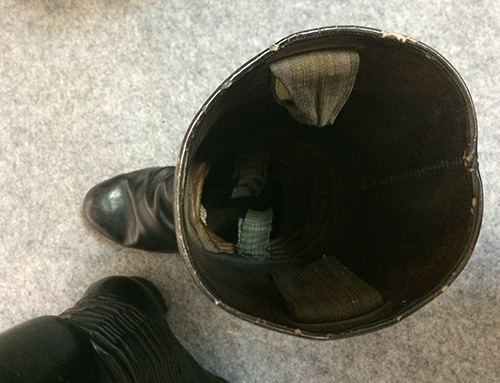
Female leather boots called “marigold boots” because they were duo colored. The end of the 19th century. Handmade. These boots were made from black and light-brown leather. The bootlegs are high and rolled up once. There is a decorative pattern made from tiny brass nails on the back of the boots. The heels are made from pieces of leather glued together. The soles are attached to the upper with tiny wooden pegs. Similar footwear was used in Poland.
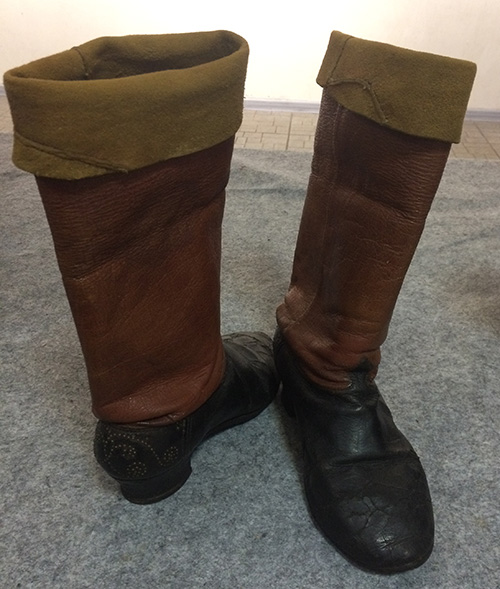
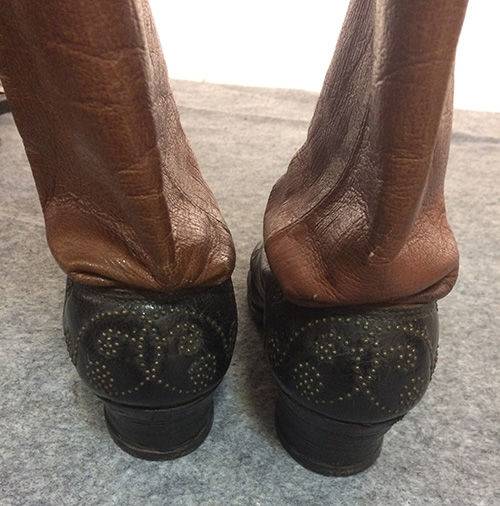
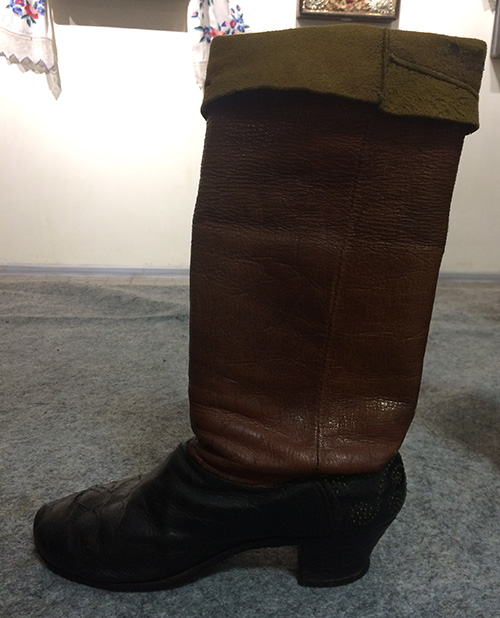
Women’s leather laced-up shoes. The beginning of the 20th century. For that time, these shoes were rather elegant and they were expensive. Even today, they look nice. They have a high lacing and a small heel made from pieces of leather glued together.
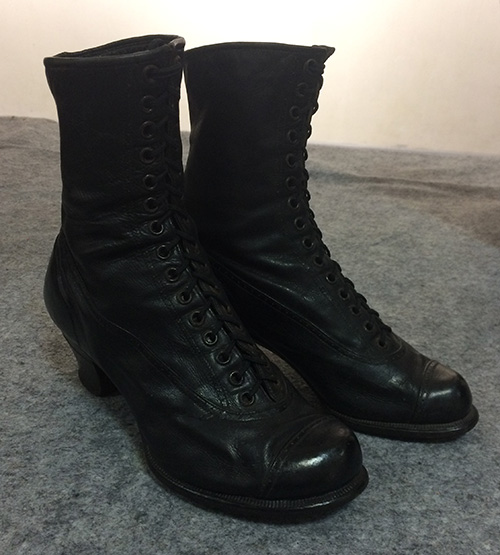
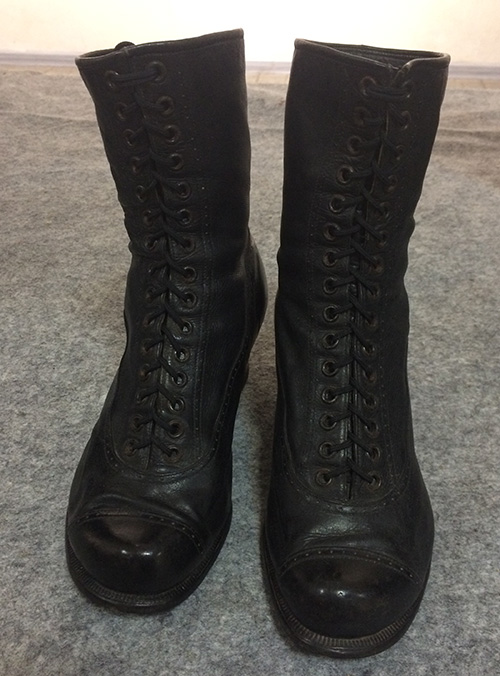

Female ornate leather shoes. Ivano-Frankivsk region (western Ukraine), the 1st half of the 20th century. Handmade. These boots are fastened with a help of 19 buttons. They are also embellished with cutting and decorative sewn patterns. The heels are made from pieces of leather glued together.
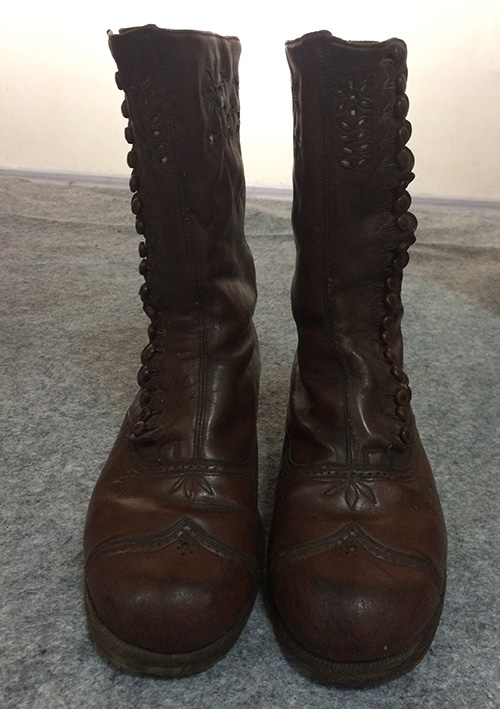
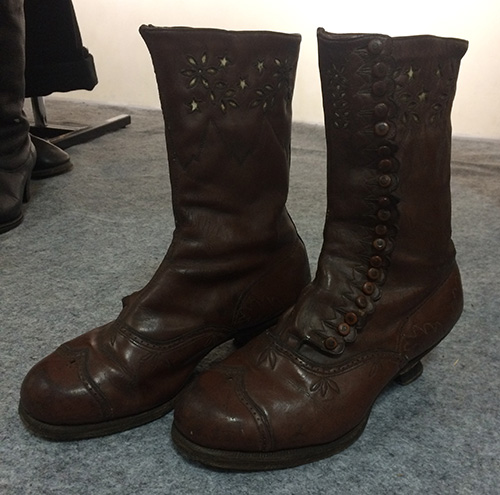
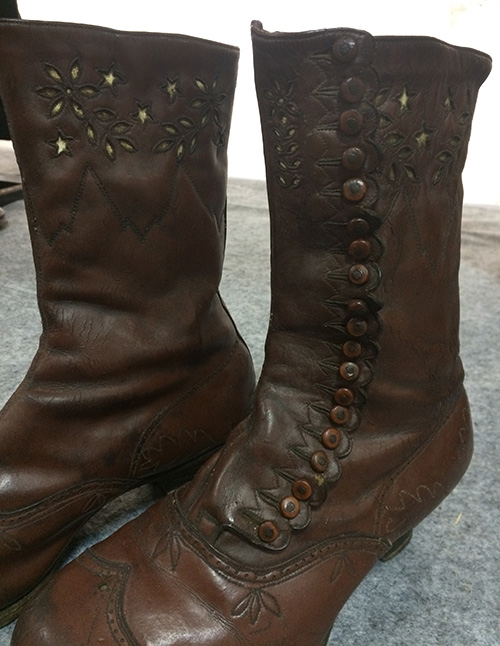
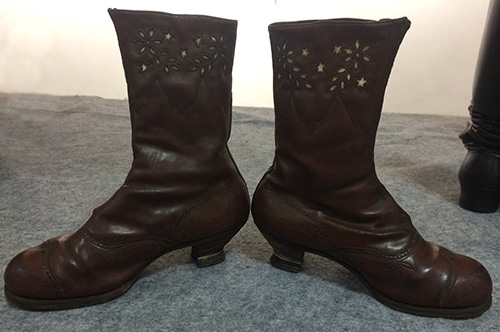
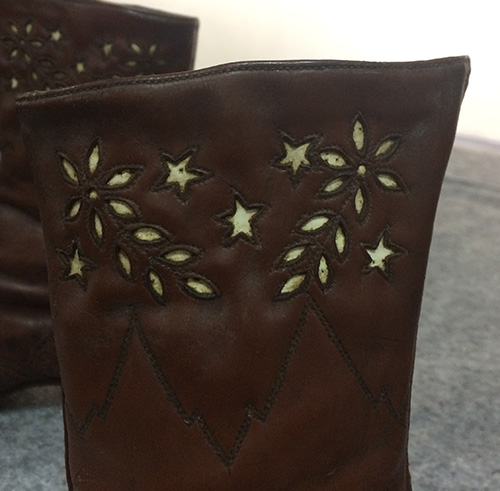
Women’s high leather shoes, pretty ornate. Vinnytsia region (central Ukraine), the 1st half of the 20th century. Handmade. They have a high lacing. The shoes are adorned with applique and decorative sewn patterns. The heels are made from pieces of leather glued together. The soles are attached to the upper with tiny wooden pegs.
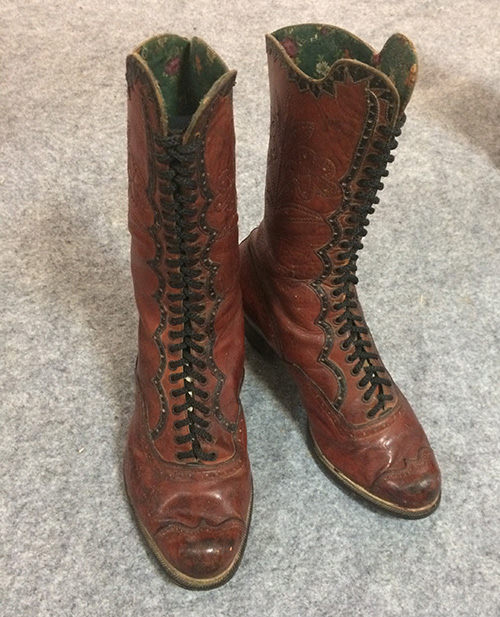
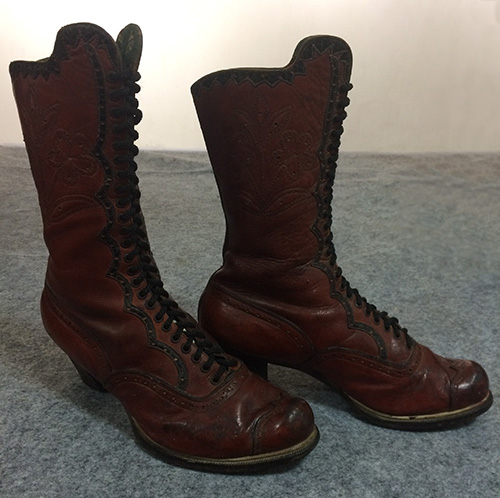
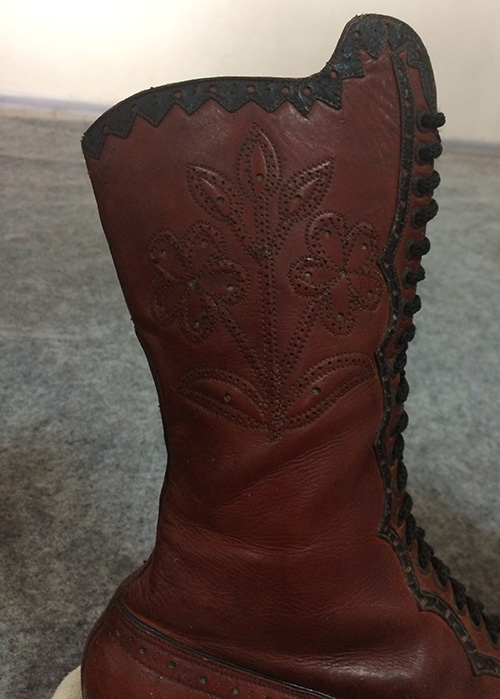
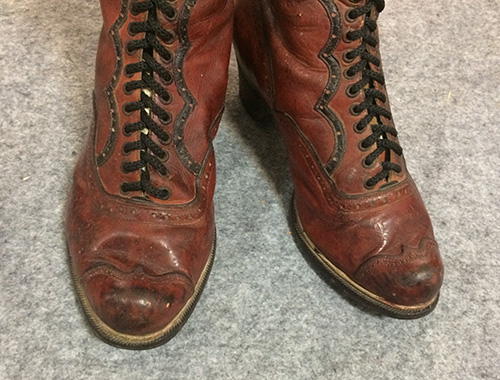
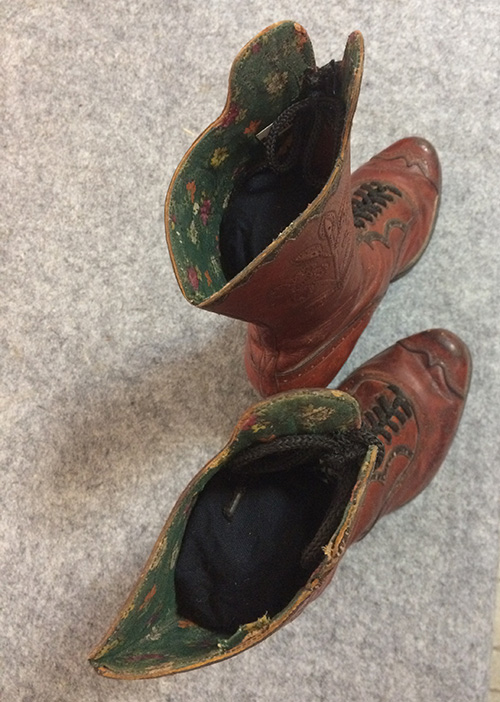
Female high leather laced-up shoes. Kyiv, 1936. Industrial mass production. Their color is unusual gray-green, including the matching laces. They have a high lacing and elegant heels. These shoes are pretty modern.
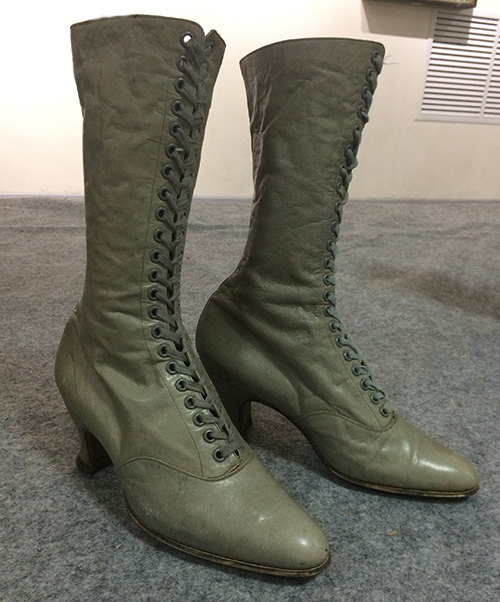

Women’s leather laced-up shoes. Luten’ka village, Hadiach district, Poltava region (central Ukraine), the 1st half of the 20th century. Industrial mass production, there is a marking “Pelikan” inside the shoes. They have a high lacing. The heels are made from pieces of leather glued together. These shoes are pretty modern.
